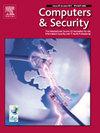RanSMAP:用于创建基于深度学习的勒索软件检测器的勒索软件存储和内存访问模式开放数据集
IF 5.4
2区 计算机科学
Q1 COMPUTER SCIENCE, INFORMATION SYSTEMS
引用次数: 0
摘要
勒索软件攻击已成为企业和公共部门面临的重大网络威胁。我们以前的 RanSAP 数据集只包含使用瘦管理程序收集的低级存储访问模式,用于创建基于行为的勒索软件检测器;当操作系统级勒索软件检测系统受到破坏时,该数据集可提供额外的保护层。以前的勒索软件检测器仅使用低级存储访问模式,当 Office 应用程序和网络浏览器同时执行时,无法检测到勒索软件。本文介绍了一个新的开放数据集,名为 RanSMAP(勒索软件存储和内存访问模式)。它包含使用瘦管理程序收集的底层存储和内存访问模式。我们概述了开放式 RanSMAP 数据集,包括目录结构和文件格式,以指导研究人员使用该数据集。然后,我们介绍了数据预处理方法和基于深度学习的勒索软件检测器。RanSMAP数据集包括6个勒索软件样本和6个良性应用程序的存储和内存访问模式、7个Conti勒索软件变体,以及在不同CPU、内存世代、内存频率和内存容量的机器上同时执行勒索软件和良性应用程序的情况。实验结果表明,与仅使用存储访问模式的检测器相比,低级内存访问模式将勒索软件的检测性能提高了 2.3%。我们证实,使用 RanSMAP 数据集训练的勒索软件检测器可以在 Office 和网页浏览器程序同时执行时检测到勒索软件。我们介绍了最先进的勒索软件检测研究调查和开放行为特征数据集的可用性,并讨论了我们的 RanSMAP 数据集的优势和局限性。本文章由计算机程序翻译,如有差异,请以英文原文为准。
RanSMAP: Open dataset of Ransomware Storage and Memory Access Patterns for creating deep learning based ransomware detectors
Ransomware attacks have become significant cyber threats to enterprises and public sectors. Our previous RanSAP dataset, which contained only low-level storage access patterns collected using a thin hypervisor, was used to create behavioral-based ransomware detectors; it provides an additional protection layer when the OS-level ransomware detection systems are compromised. The previous ransomware detector, which used only low-level storage access patterns, could not detect ransomware when Office applications and web browsers were executed simultaneously. This paper presents a new open dataset named RanSMAP, which stands for Ransomware Storage and Memory Access Patterns. It contains low-level storage and memory access patterns collected using a thin hypervisor. We provide an overview of the open RanSMAP dataset, including directory structure and file formats, to guide researchers in using the dataset. We then present our data preprocessing method and deep-learning-based ransomware detector. The RanSMAP datasets consist of storage and memory access patterns of six ransomware samples and six benign applications, seven Conti ransomware variants, and simultaneous execution of ransomware with benign applications collected on the machines with various CPUs, RAM generations, RAM frequencies, and RAM capacities. The experimental results show that low-level memory access patterns improved ransomware detection performance by 2.3% compared to detectors using only storage access patterns. We confirmed that ransomware detectors trained using the RanSMAP dataset can detect ransomware when Office and web browser programs are executed simultaneously. We presented the survey on state-of-the-art ransomware detection research and the availability of open behavioral-feature datasets to discuss the advantages and limitations of our RanSMAP dataset.
求助全文
通过发布文献求助,成功后即可免费获取论文全文。
去求助
来源期刊

Computers & Security
工程技术-计算机:信息系统
CiteScore
12.40
自引率
7.10%
发文量
365
审稿时长
10.7 months
期刊介绍:
Computers & Security is the most respected technical journal in the IT security field. With its high-profile editorial board and informative regular features and columns, the journal is essential reading for IT security professionals around the world.
Computers & Security provides you with a unique blend of leading edge research and sound practical management advice. It is aimed at the professional involved with computer security, audit, control and data integrity in all sectors - industry, commerce and academia. Recognized worldwide as THE primary source of reference for applied research and technical expertise it is your first step to fully secure systems.
 求助内容:
求助内容: 应助结果提醒方式:
应助结果提醒方式:


